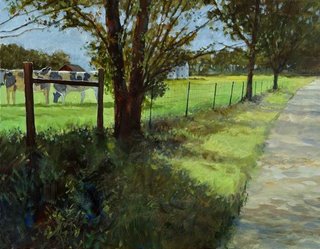Never think that any tool you use is cheating. There is no substitute for knowing how to draw and one must know drawing, perspective, and such before it can possibly show in a painting, even abstract painting.
Without knowing the basics even the most uneducated viewer will instinctively know something is wrong with the painting. But when an artist is firmly based in composition, drawing, and the use of line, using tools such as a projector, camera, or anything else for that matter to accomplish your goal can be useful and one should not be
embarrassed by using those tools that are available to him or her.
I believe if the old masters had digital images available, they certainly would have put them to use.
When someone buys a painting from me they care very little about how the image was created. What they are buying is an image that speaks to them in some way. They don't care if I used a paint brush made of sable or one of old hemp. They are interested in the result, not the path that created it.



























